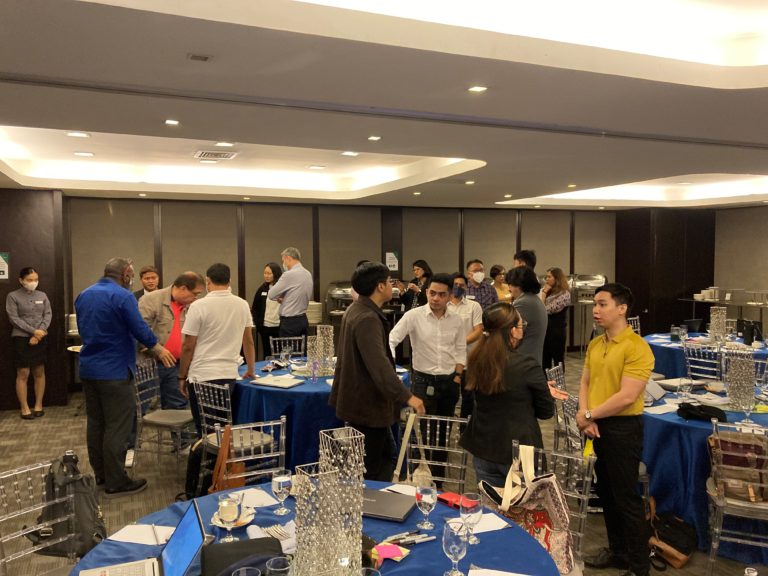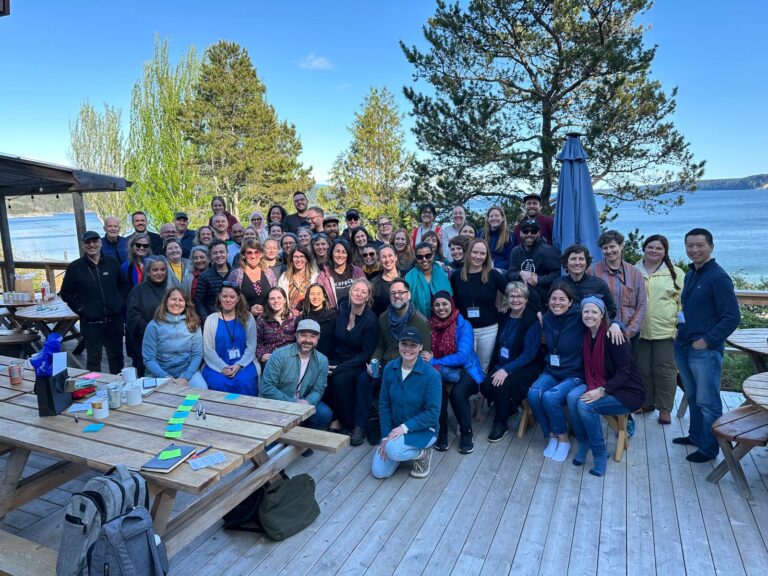
10 February 2023
Three lessons from working in international development
Social innovation leader Brent Wellsch shares his insights in honour of International Development Week
This week from February 5 to 11, people and organizations all over the world are celebrating International Development Week to recognize the efforts that have been made to create a more peaceful, inclusive, and prosperous world. Given this occasion, I wanted to reflect on some key lessons and insights I have gained as a practitioner in the international development space.
For context, my professional niche is in social innovation. I have 10 years of experience working with communities, organizations, and teams that are embedded in sticky complex problem spaces. These groups deeply desire an alternative path forward, which requires pivots in mindset, culture, and vision.
While much of my work is grounded here in Canada, I have had the pleasure of partnering with the United Nations Development Programme (UNDP) on international projects. Over the past three and a half years, I have been part of a UNDP team exploring the potential of a “circular economy” in Asia and Pacific. The circular economy is generically defined as a model of production and consumption that “eliminates waste and pollution, keeps products and materials in use, and regenerates natural systems.”
While my journey began as a response to waste management challenges in the region, the approach has become more visionary over time. It has evolved to encompass a wider, systems-level question: what are the full series of innovations and changes necessary to develop new economic models and behaviors that can help drive desired social good?
Through this exploration, I have grown substantially. I have learned many valuable lessons, which I share below, that have become core to my approach as a social innovation practitioner. They can best be defined as practice provocations that I am curious about and seek out as much as possible to better align my energy and efforts.
Innovation and the nature of constraints
Like so many others, I have been a part of many projects where a group of stakeholders surface shared frustration – and perhaps enthusiasm – to fundamentally address a complex challenge in a new way. However, when it comes to rolling up one’s sleeves up and transitioning from thinking to action, things often hit a metaphorical wall.

There are many reasons for why this happens, many of which are legitimate. In my experience working in Asia and Pacific, I have witnessed the nuances and constraints that communities and organizations face which greatly influence their readiness to genuinely commit to an innovation process.
I have found that there is a strong correlation between innovation readiness and real-world constraints. My work in Asia and the Pacific shows that innovating new economic models to drive new realities on the ground is not a nice to have, but a necessity. Population growth, tangible difference in weather patterns, rising sea levels, strained urban infrastructure and design, and the drastically shifting labour market needs are real constraints that are driving tangible experiences in the day-to-day life of those in the region. There is no room for innovation theatre. Instead, it is a requirement to address known and present challenges that are happening today.
I contrast this project experience with others I have had here in Canada. Weak signals of change can be felt, and in some cases a community or organization can see the forest beyond the trees. In most cases, however, the urgency to invest in innovation is not acute enough to require this.
This is certainly a pragmatic take but one that, at least in my work, has real credibility. Paying attention to this dynamic has helped to better align my aspirations with projects/organizations and has become more and more core to my practice: where is there alignment between a recognition of a need to innovate and the compelling conditions in the form of real-world constraints that make the decision not to act a risk not worth taking? While this relationship will never be perfect, I do think it is important to consider and probe when scoping partnerships and projects in the social innovation space.
Mission-oriented desire and approach to innovation
The notion of “mission-oriented innovation” has been championed for some time by leading thinkers and organizations including Mariana Mazzucato and the Organization for Economic Cooperation and Development (OECD). It’s premised on the notion that innovation and transformational change must be driven by state investment that is bold, focused, and unrelenting in its pursuit of change. In other words, the by-product of a mission-oriented approach.
While I contend that this concept is still in its infancy and not yet a scaled model globally, I have observed this concept being embraced more and more within international development spaces to bring clarity on what whole-systems change is required, and the input mechanisms required to achieve it. The focus here is in fostering the capacity of the state as an institution to drive transformation in spaces of social need/good. The notion of mission-oriented innovation helps to foster vision and orient ambition to what is needed to drive innovation for social change.
This is a concept I am eager to incorporate more into my work that is closer to home. Specifically, when it comes to the grand challenges of our time, how do we build compelling narratives for change as the foundation of mission-oriented innovation endeavors?
From my limited perspective, we have been hesitant or even resistant in Canada to commit boldly to a transformational approach that can derive fundamental solutions to our most pressing challenges. The housing crisis, mental health and substance use, growing income inequality, and emerging climate events are all affecting the day to day lives of Canadians right now. If we are serious about addressing these issues, a steadfast commitment to bold and focused change is needed. We have an opportunity to pull a page from case examples in the developing world, many of which are framing their efforts in the context of missions to help bring this focus to our grand challenges here.
To effect systems change in the world, we must first change ourselves
A major “ah-ha” moment I have had while working with UNDP is that in order to be an agent of change, one must be willing to acknowledge the fundamental shifts that need to occur internally – within their own DNA – in order to best show up in a way that is aligned with their purpose and intent as change agents. In this blog here, we go into some detail about the internal change process we have been on.
I think this is a universal principle that applies within all social innovation endeavors. To what extent are those that have the capacity to effect change (and those that hold power) willing to change themselves in service of this goal/ambition? In other words, “walking the walk.”
While not easy and surely an imperfect endeavor, I observe actors such as UNDP attempting to walk this walk, and this is something that I, as a practitioner, will be looking for as I engage in more and more social innovation projects here closer to home.
To close, I want to express great gratitude towards the partnerships and friendships I have developed during my brief time working in the international development space. Namely thank you to Alex Oprunenco for being a dear partner and friend who has brought me along on this great ride and to all those I have engaged with throughout the region during my time. I cannot express enough gratitude for these experiences and want to thank you all!





